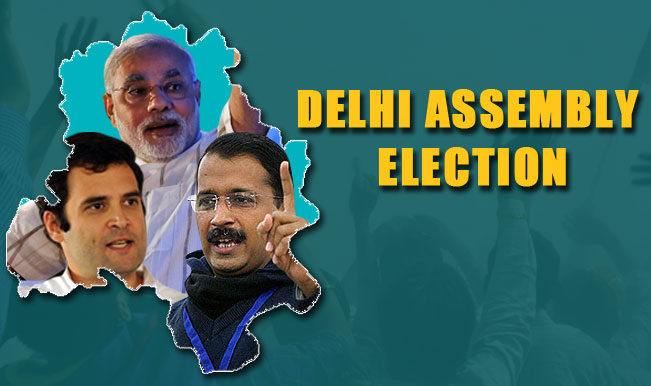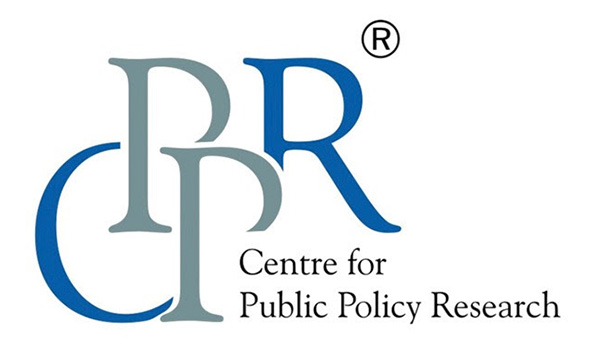
Modi-Obama Nuclear Breakthrough- A Vicious Circle
February 7, 2015
Obama’s Visit to New Delhi – The Role of Friendship vs The Role of Issues
February 9, 2015Decoding the elections in the largest democracy through its Capital City
- Aam Aadmi Party
- AAP
- AAP BJP and Congress
- AAP vs BJP
- Arvind Kejriwal
- centre for public policy research
- city development
- cochin
- CPPR
- D Dhanuraj
- Delhi
- Delhi election
- Delhi Election 2009
- Delhi election 2015
- Delhi Election latest
- Delhi Elections 2004
- Delhi Elections 2013
- Delhi Elections 2014
- Delhi Elections 2015
- Election India
- Election latest
- Election prediction Delhi
- election results
- India
- Kiran Bedi
- kochi
- Opinion Poll
- politics
- public policy
- Research Methodology
- think tank
- USA
- Vote share of AAP in Delhi
- Vote share of BJP

The people of Delhi have cast their vote and it will be interesting to see if the Modi wave has began waning by the 2015 Delhi Assembly elections. In the recent State Assembly elections at Jharkhand, Maharashtra and Jammu and Kashmir, the BJP had made significant gains by riding mostly on the Modi wave. However, importantly, BJP did not have to face a strong opposition in these States. The major opponents in these States could not raise any real challenge for the BJP due to the prevailing anti- incumbency sentiment.
Delhi presents a slightly different picture when compared to Jharkhand or Maharashtra. Here, for the first time since last year’s Lok Sabha elections, the BJP is pitted against an equal force, with the AAP emerging as the single largest and strongest opposition.
An objective analysis would bring out certain facts about how the citizens respond during the elections. In a democratic process, people’s reaction in elections is based on their hard life experiences. When they get disgusted with a non-performing, corrupt incumbent regime, it is quite natural for them to be swayed by an alternative political phenomenon. Later, when they realize that they were deceived again, they would go for another alternative.
The ability of a Party or a Candidate to engage with the electorate is at test at elections and the one who does this best will end up on the winning side. This trend can be seen from past elections. In 2004 Lok Sabha elections, Congress party came to power at the Centre despite beginning as the under-dog and many predicting that the BJP would retain its power. The BJP lost out because it painted India as a shining nation while the ground realities faced by majority of the electorate were different. The Congress appeared to connect better with the electorate with their slogan ‘Aam Aadmi ke Badthe Kadam’. As a result, the Congress won by a 6-1 margin against the BJP at Delhi.
Fast forward to the 2009 Lok Sabha elections and we find the campaign of BJP was more obsessed with terror attacks and nuclear deal in their campaign which failed to appeal to the common man. On the other hand, the Congress spoke of employment generation, economic development and prosperity which were more in sync with the aspirations of the ordinary voter. As a result, the BJP lost by a 0-7 margin to the Congress at Delhi. The Congress had a vote share of 57% while the BJP had only 35%.
More recently, the 2013 Assembly Election in Delhi was more about Corruption – an issue which found takers among the common man. The mood was heavily against the Congress and it resulted in a division of votes between the Congress and the AAP. The BJP had 33% votes while the AAP succeeded in securing 29% votes. Interestingly, the vote share of the Congress was only 24% which shows a decline of 23% from its share in 2009 Lok Sabha Elections. This indicates that the votes eroded from the Congress went to the AAP while the BJP support base was not affected significantly by the entry of the AAP.
Another crucial development during this election was the role played by the Social Media. The 2013 election campaign was held equally on ground as on the Social Media platform. This led to increased political awareness and greater involvement in politics by the youth. As a result, the overall polling witnessed a steep rise from 52% in 2008 to 65% in 2013 in Delhi. It is reasonable to conclude that the additional 13% who polled would have had anti-Congress sentiments.
The 2014 Lok Sabha election became a one-sided affair largely due to the BJP, and in particular Modi, cashing in on the power of social media. The branding of Modi paved way to BJP’s one-sided victory during the elections gathering 46% of vote share in Delhi – an increase of 13% of vote share when compared to the 2013 Assembly election. Meanwhile, the share of Congress declined further to 15%.
Surprisingly, even though the AAP had resigned after 49 days in power, they still managed to claim 33% of vote share in the 2014 Lok Sabha election – which is an increase by 4% from their 2013 Assembly Election share. This additional vote share could have come from erstwhile supporters of the BSP and Congress. This shows that they managed to stay relevant. With further potential erosion of votes from the Congress and because of the unsolicited backing of several small parties and religious groups, the AAP can be expected to make further improvement in their vote share in the 2015 Assembly elections.
As far as election campaigns are considered, the AAP leads the battle of campaigns by taking up issues that are more directly related to the electorate. It was the AAP who set the tone for the election and every other party has merely reacted to it, instead of doing anything proactively.
The fact that BJP presented Kiran Bedi as their Chief Minister candidate is a typical reactionary measure that indicates the significance of AAP. Both the BJP and Congress campaigns were more directed at maligning the AAP – thereby reactive and negative in nature. However, campaigns of that nature have not succeeded in swaying votes in favour of a party in the past.
Positive campaigns and more populist agenda, like the one AAP has come up with, is more likely to prevail over the rest. The AAP has been repeatedly speaking of reforms for electricity, drinking water, housing, employment, public safety and law and order. These issues matter the most to the voters as they are closer to their real life issues, than the negative campaigns and the personal attacks.
In fact, the BJP and the Congress suffers from a want of a strong campaign. The magical words like ‘Make in India’, ‘Economic Superpower’, ‘Smart City’ etc might find takers in the glossy Corporate World. However, it would not be correct to assume that they would appeal to the masses because they are not related to the challenges and problems they face in their daily lives. They are not concerned with US President Obama’s visit or Modi’s diplomatic romanticism.
For BJP to succeed, they would need to replicate their 2014 election success. The static support base of the BJP has been around 36% of the electorate over the last 7 elections (4 Assembly Elections and 3 Lok Sabha Elections). The extra 10% share that they got in the last election could be attributed to the Modi wave. However, there is nothing to point towards the BJP registering an increase in vote share in the 2015 Assembly elections. Their vote share is likely to drop more depending on the extent to which Modi wave has waned. Meanwhile, the AAP is likely to show significant improvement from its 33% vote share in 2014 elections. The Congress is highly unlikely to retain its share of 15% votes it got in the 2014 Lok Sabha election because they have done nothing new to attract votes.
Kiran Bedi becoming the CM candidate of the BJP could also work in favour of the AAP as it has created fissures in the rank and file of the BJP and also because Kiran Bedi has proved herself to be weak when it comes to handling the media as well as while interacting with the voters and party workers.
While predictions are difficult, the 2015 Assembly election result would have significant impact on the government at the Centre and is likely to revive political parties across India. An AAP win could see it becoming the lead Opposition Party in India.
Whoever wins, it will be a good time to be in Delhi, because both Kiran Bedi and Arvind Kejriwal are made of the same matter – irreproachable, tough and capable administrators with a no-nonsense approach – something that has long been lacking in Chief Ministers in the Country.
*The author is the Academic Director of CPPR.
Disclaimer: The views expressed here are those of the author and need not necessarily reflect the views of CPPR.
K C Abraham is Advisor to CPPR and also the Academic Director. He retired as Professor of Political Science from Sacred Heart College, Thevara, Kochi, Kerala.
- K C Abrahamhttps://www.cppr.in/author/abraham
- K C Abrahamhttps://www.cppr.in/author/abraham
- K C Abrahamhttps://www.cppr.in/author/abraham

